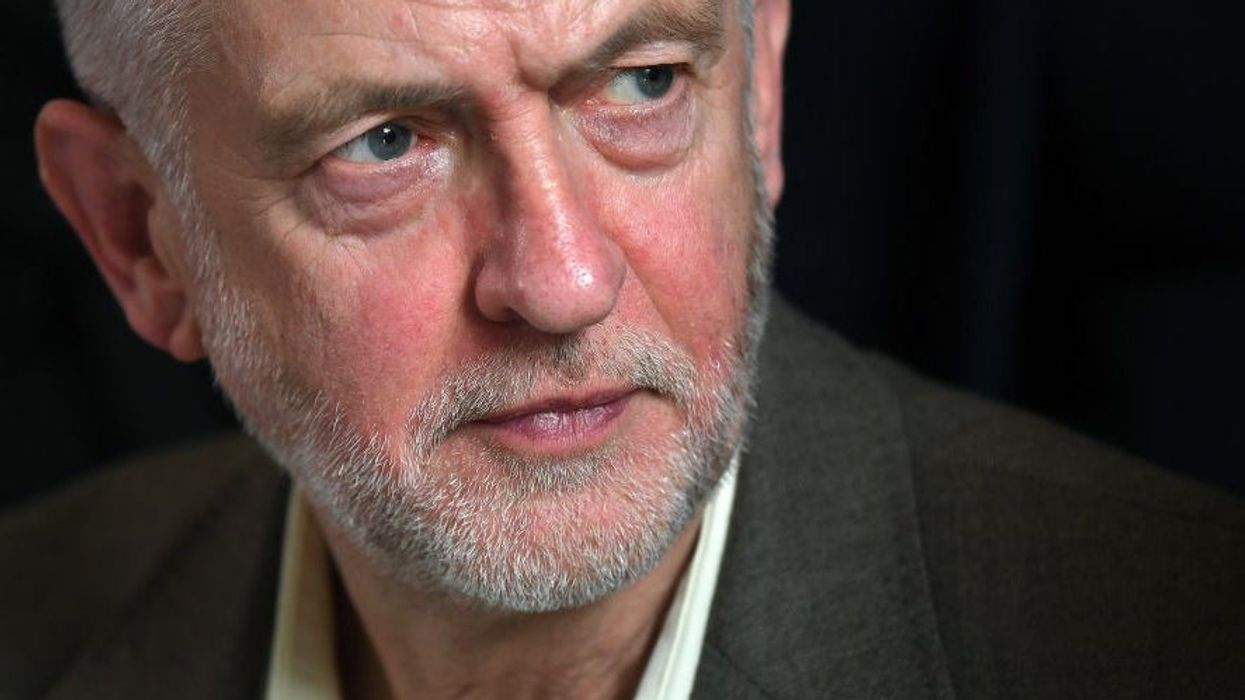News

Colleagues defended the Labour leader, saying he had always fought discrimination
EPA
Last week, Labour MP Luciana Berger tweeted a Facebook screenshot which seemed to show Jeremy Corbyn opposing the removal of an antisemitic mural.
The post dates back to 2012, when artist Kalen Ockerman, more commonly known as Mear One, shared a photo of the mural accompanied by the caption: “Tomorrow they want to buff my mural. Freedom of Expression. London Calling. Public art.”
Labour leader Corbyn is shown to have responded with a comment:
Why? You are in good company. Rockefeller destroyed Diego Rivera’s mural because it includes a picture of Lenin.
Berger’s initial complaint to the leader's office was met with a response which she described as inadequate and lacking in understanding. The Jewish Labour Movement then announced on Sunday that a demonstration had been scheduled for the following day.
Also on Sunday, the Jewish Leadership Council issued an open letter describing frustration at the fact Corbyn repeatedly claims to oppose antisemitism while, according to the Council, simultaneously failing to address concerns about it.
Anger over the issue has mounted since Corbyn took over as leader. He had already been criticised over supportive comments he made for militant groups Hamas and Hezbollah, and for Stephen Sizer and Raed Salah, both known for having made antisemitic statements.
There were then a string of incidents under his leadership which critics say he failed to manage well, including offensive comments made by ex-London mayor Ken Livingstone about Hitler and Zionism in April 2016. After Naz Shah MP also was found to have made offensive comments, Corbyn commissioned Shami Chakrabarti to conduct an inquiry.
But with Chakrabarti handed a peerage afterwards, and the report's launch tainted by an incident in which an activist publicly criticised a Jewish MP, the document came to be cited as an example of this failure. In an article published by The Times of Israel, Paul Charney, chairman of the Zionist Federation of Great Britain, is quoted as saying: "We must now accept that the primary aim of the report was to rid Labour of the allegations of antisemitism, but not of antisemitism itself."
With the planned protest growing, Corbyn issued a Facebook statement promising to stamp out antisemitism in the Labour Party. He also apologised for causing hurt to the Jewish community:
We recognise that anti-Semitism has occurred in pockets within the Labour Party, causing pain and hurt to our Jewish community in the Labour Party and the rest of the country. I am sincerely sorry for the pain which has been caused.
The protest went ahead as planned, with Labour MPs joining members of the Jewish community to protest against antisemitism in the party.
On Monday evening Mr Corbyn then issued a more comprehensive open letter addressed to both the Chair of the Jewish Leadership Council and the President of the Board of Deputies of British Jews. It acknowledged that antisemitism in the Labour Party has “too often been dismissed as simply a matter of a few bad apples”, and proposed an urgent meeting.
Mr Corbyn pledged to respond more quickly to future allegations, and apologised specifically for “not having studied the content of the mural more closely before wrongly questioning its removal in 2012".
But the mural itself seems unambiguous in its depiction of six wealthy businessmen propping up a table on the backs of the poor, despite artist Mear One’s assertion that only two of the six protagonists are actually Jewish. In a comment piece published by The Jewish Chronicle, Dave Rich – head of policy at Jewish protection charity CTS – analyses in detail the ways in which One’s mural reinforces antisemitic rhetoric.
He claims there are two forms of antisemitism: racialised stereotypes portrayed through appearance, and the “conspiracy theory that Jews are responsible for all the ills in the world". He argues that no further study is needed to spot the painting’s antisemitism:
The mural featured six men: some Jewish and some not. How did the artist differentiate between them? He gave the Jews big noses and other exaggerated facial features. This is playground antisemitism masquerading as profound insight.
Journalist Michael Segalov similarly highlighted the antisemitic tropes perpetuated by the appearance of the Jewish men in the mural. Not only does he unpick several historic examples of antisemitism within the Labour Party, he concludes by underlining the need for systemic change:
Corbyn is no anti-Semite, but he displayed a lack of judgement and awareness that he – and it appears some members – need to address. Time must be taken for reflection and education, or it will prove impossible to ensure the left is never blind to this issue again.
It remains to be seen whether Corbyn will follow through on his promise to eradicate antisemitism in the Labour Party. Only today, the chair of Labour's disputes panel, which oversees complaints of antisemitism, has quit after it emerged she had defended a council candidate who was alleged to be a holocaust denier, urging officials to lift his suspension.
While, the joint response to his letter issued by the Board of Deputies and the Jewish Leadership Council, said his response to them had been welcome, they have refused a meeting until a list of conditions has been met - including taking personal responsibility for antisemitism in the party and appointing an independent commission to tackle it.
More: The press were biased against Jeremy Corbyn's Labour in the election, study finds
Top 100
The Conversation (0)













